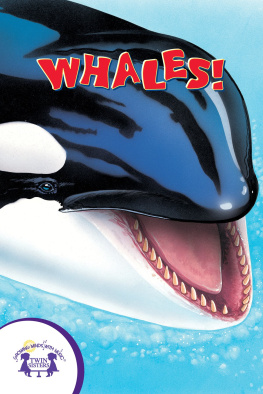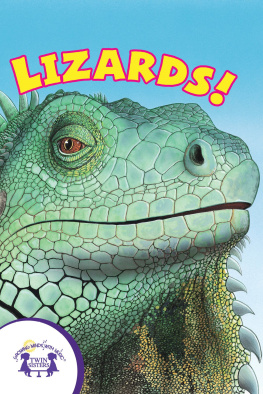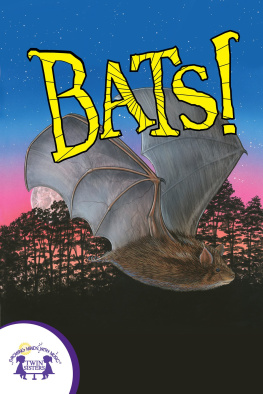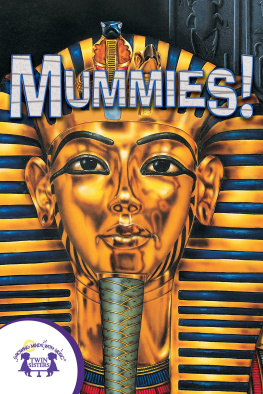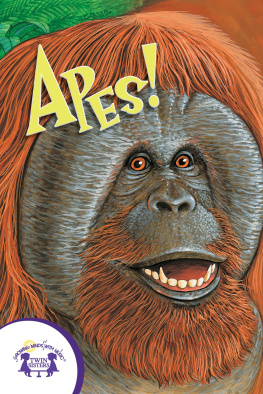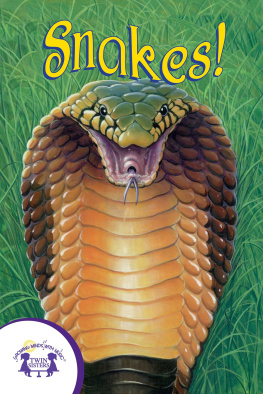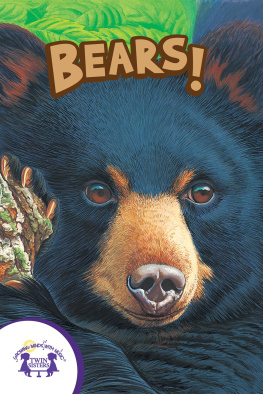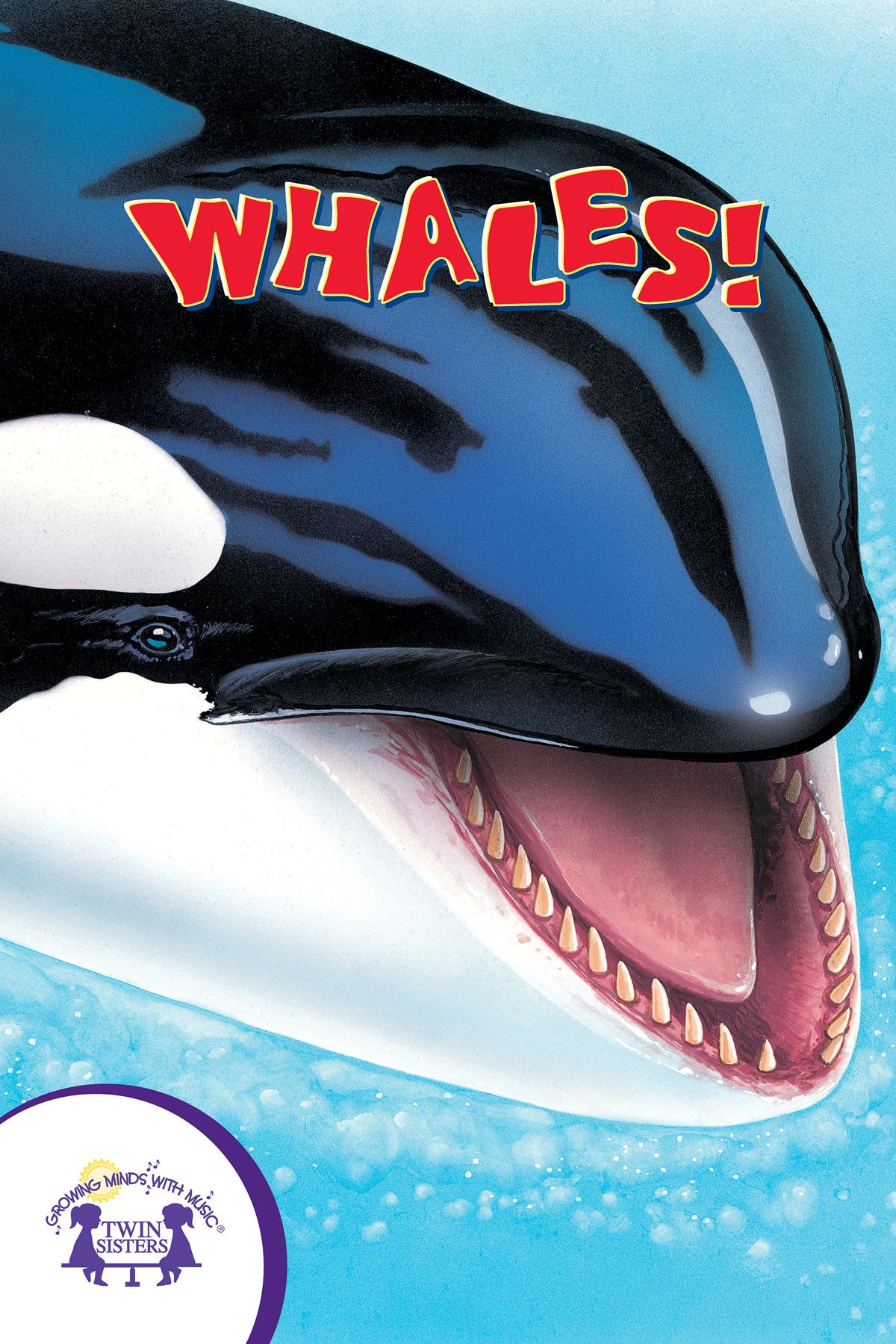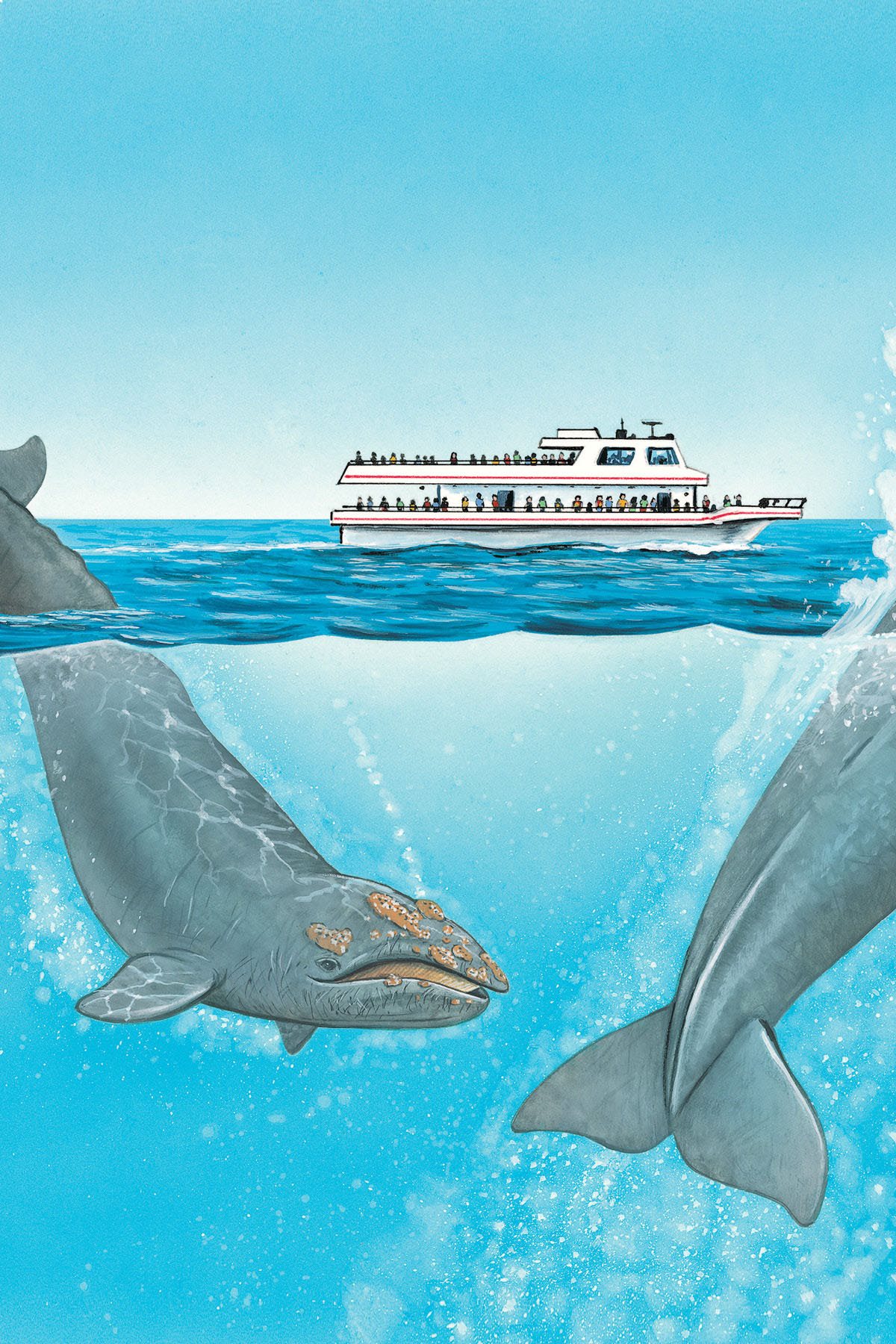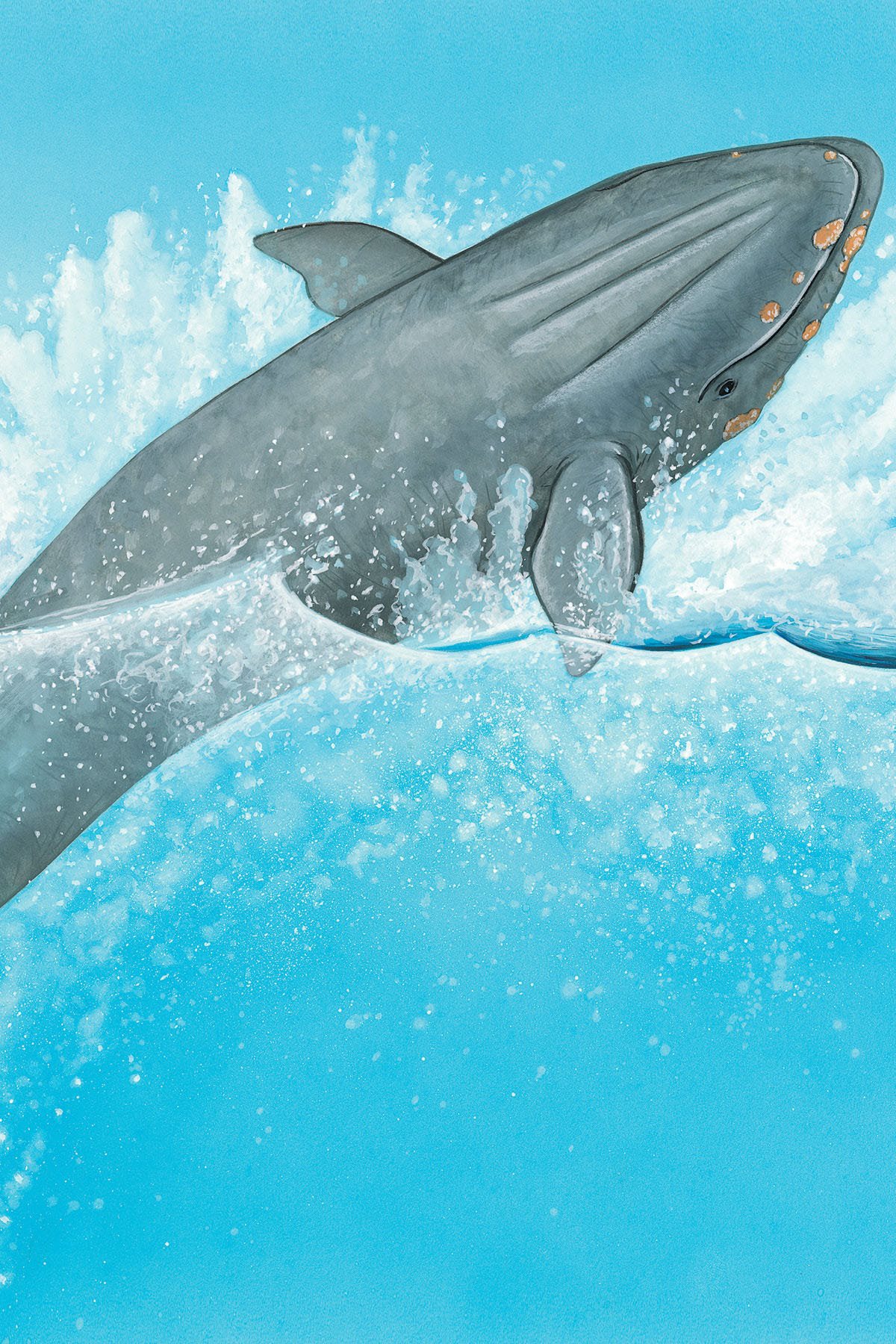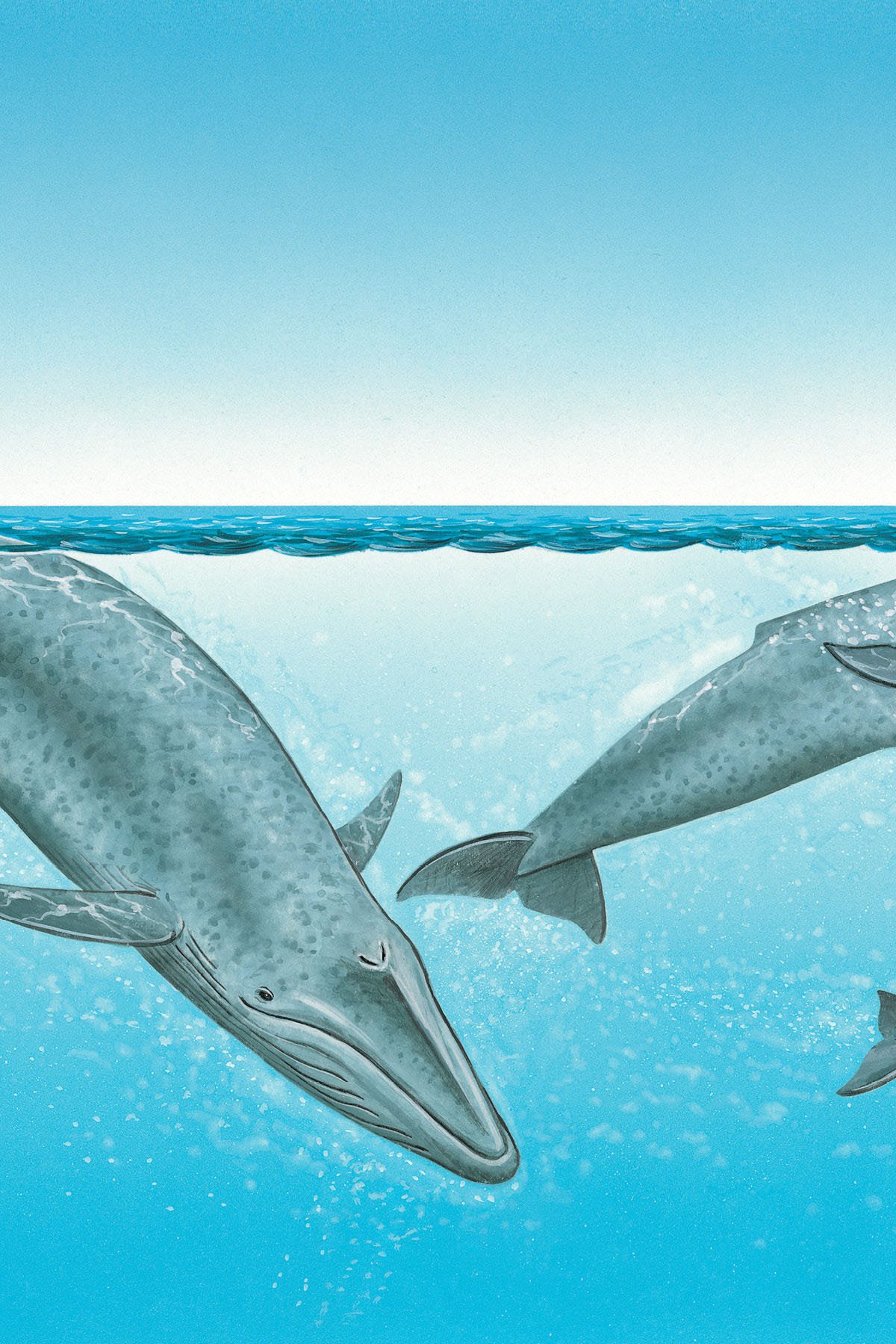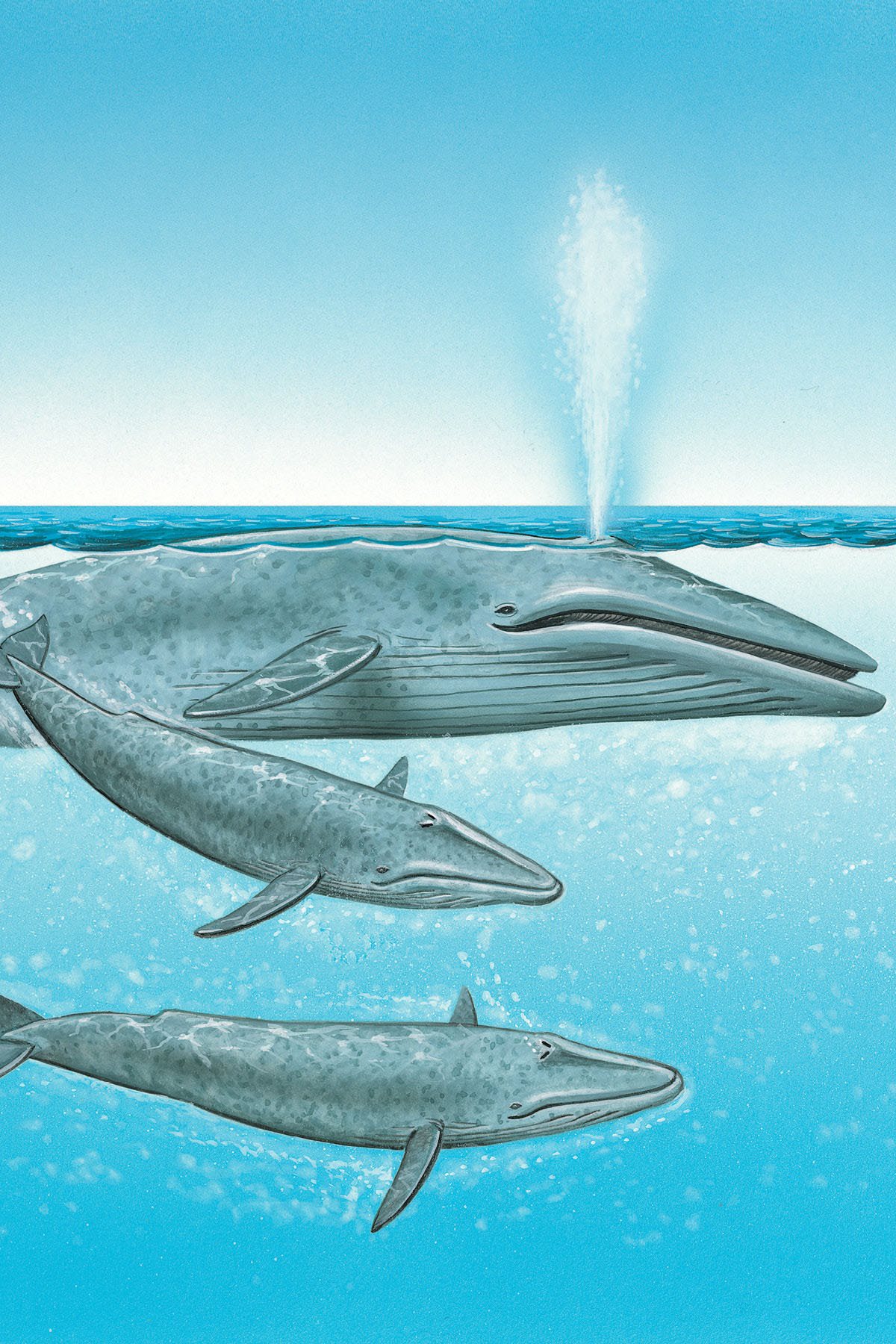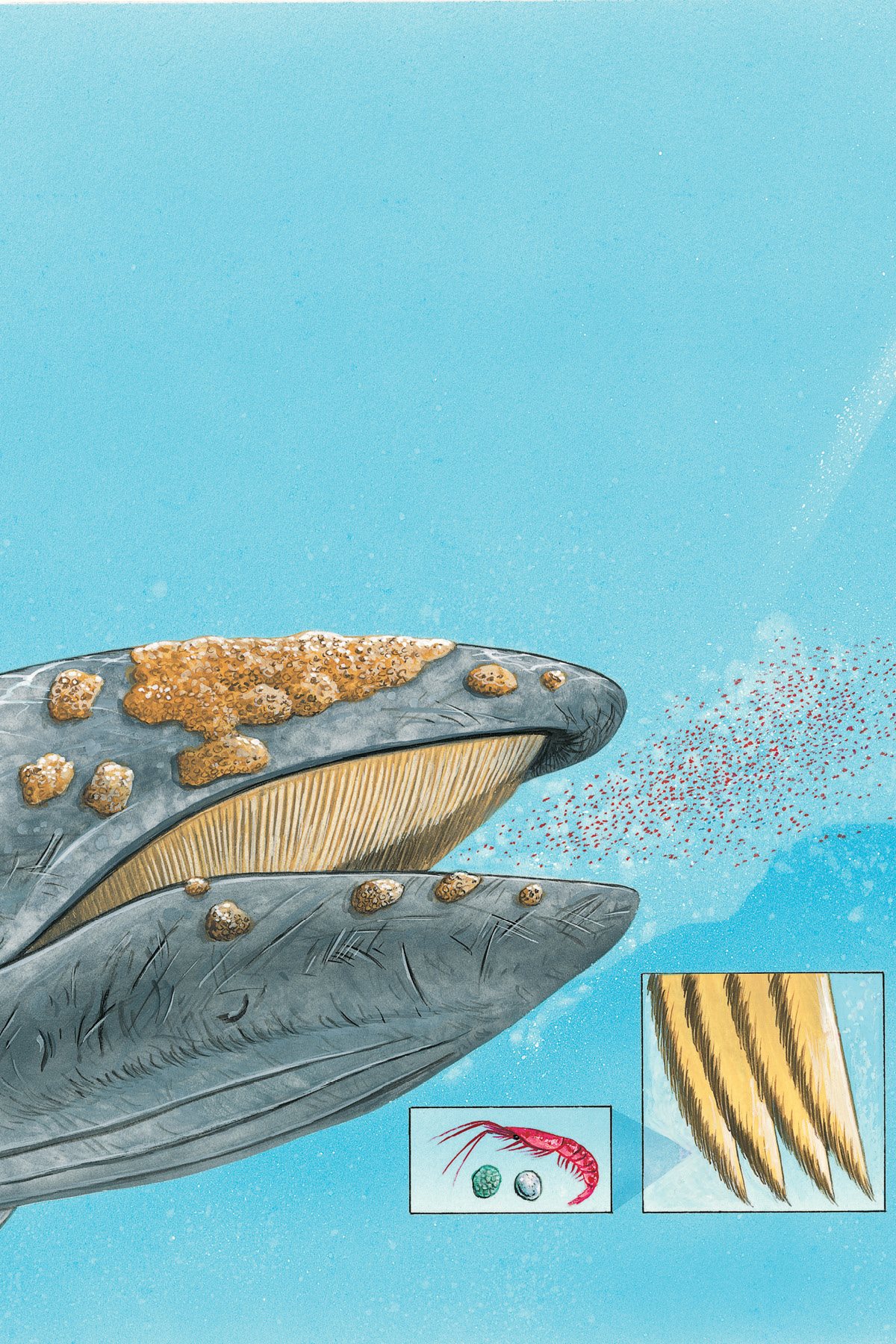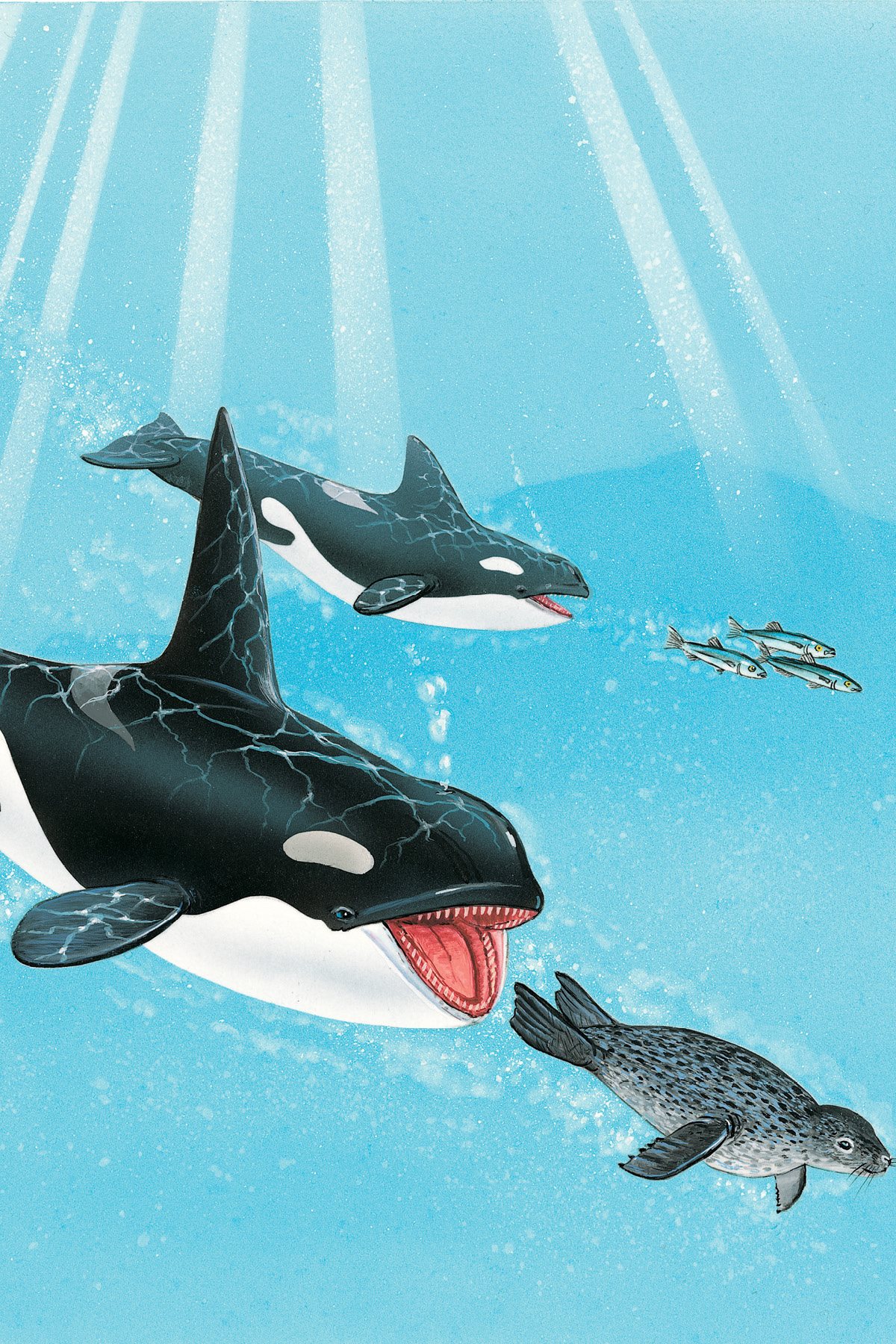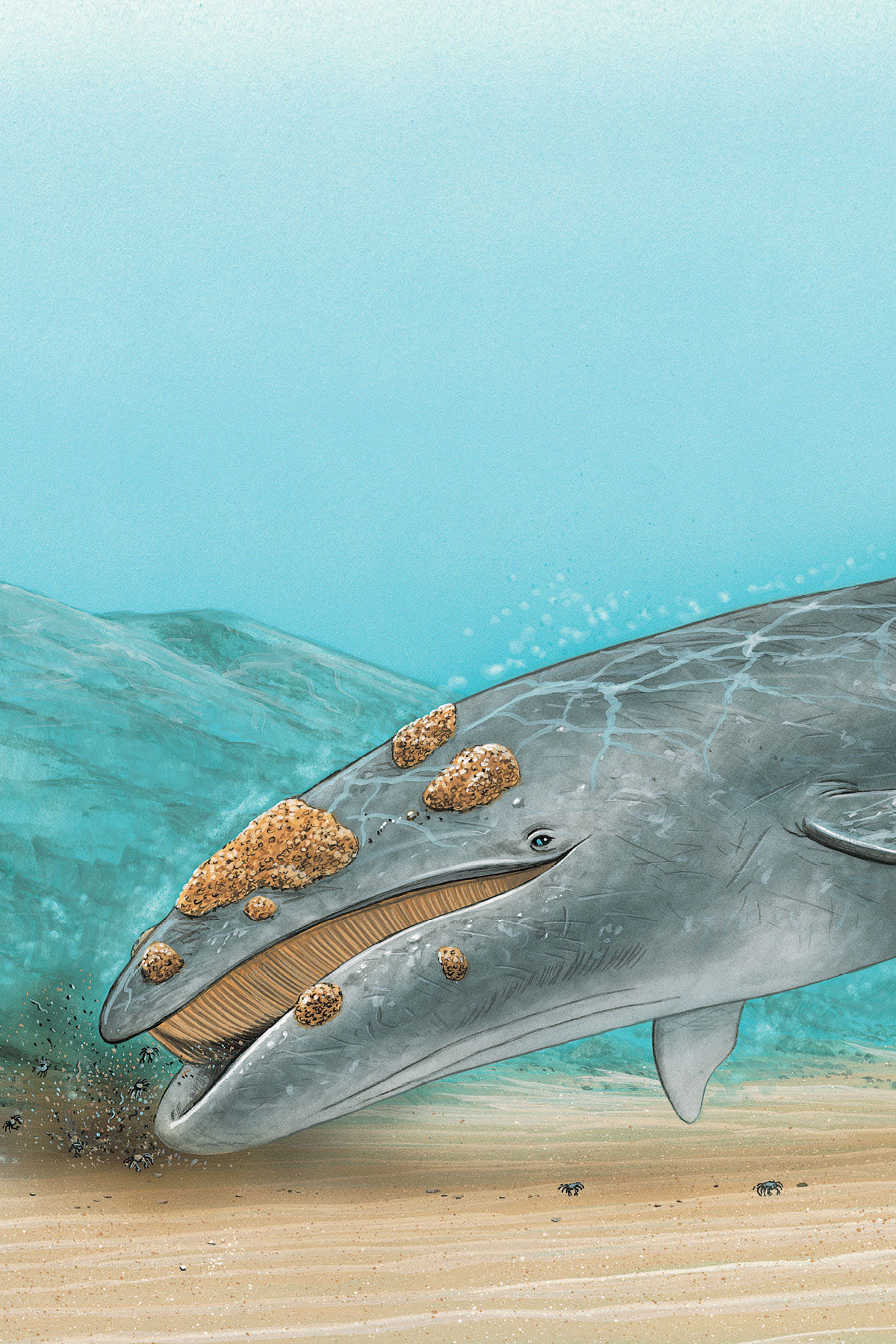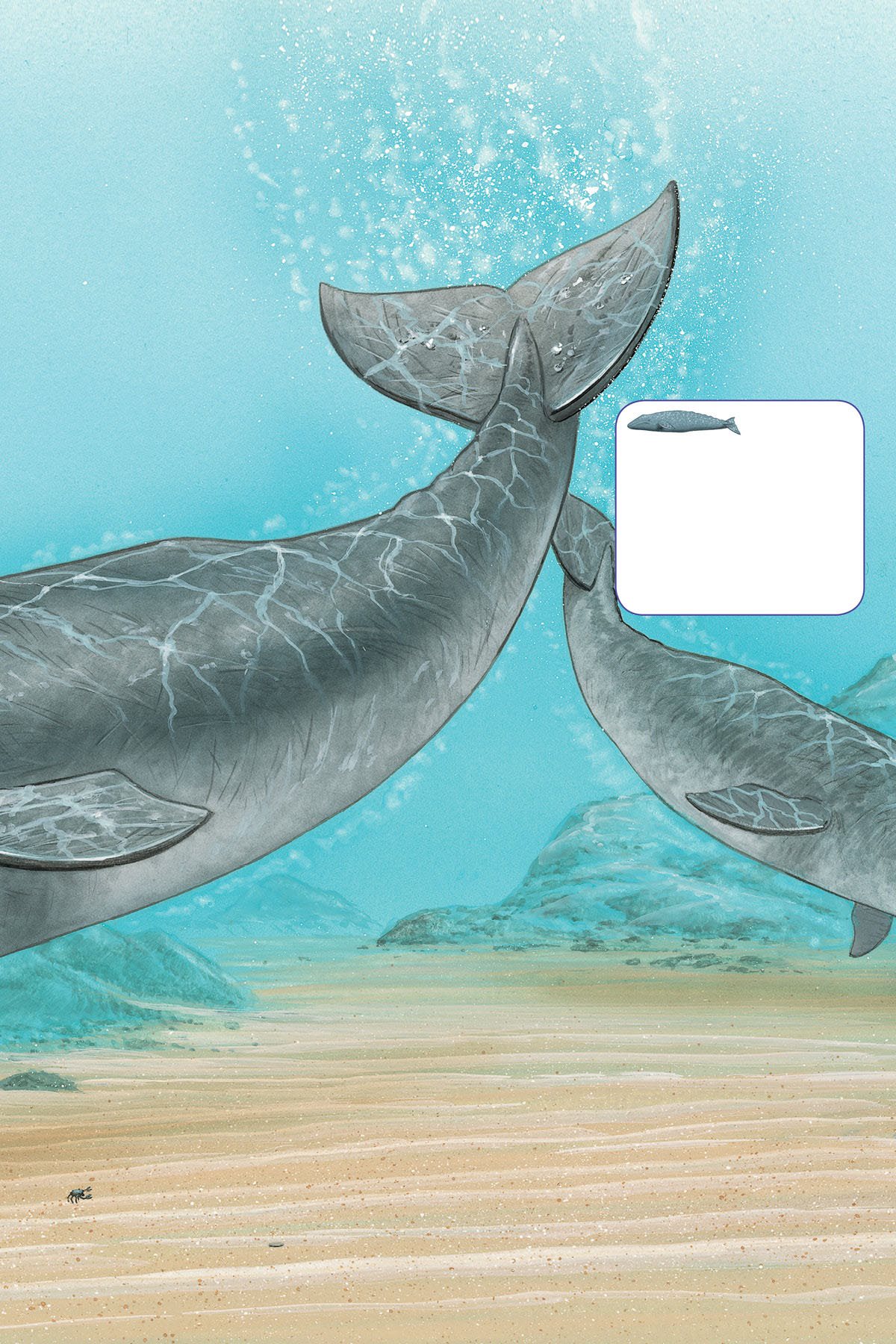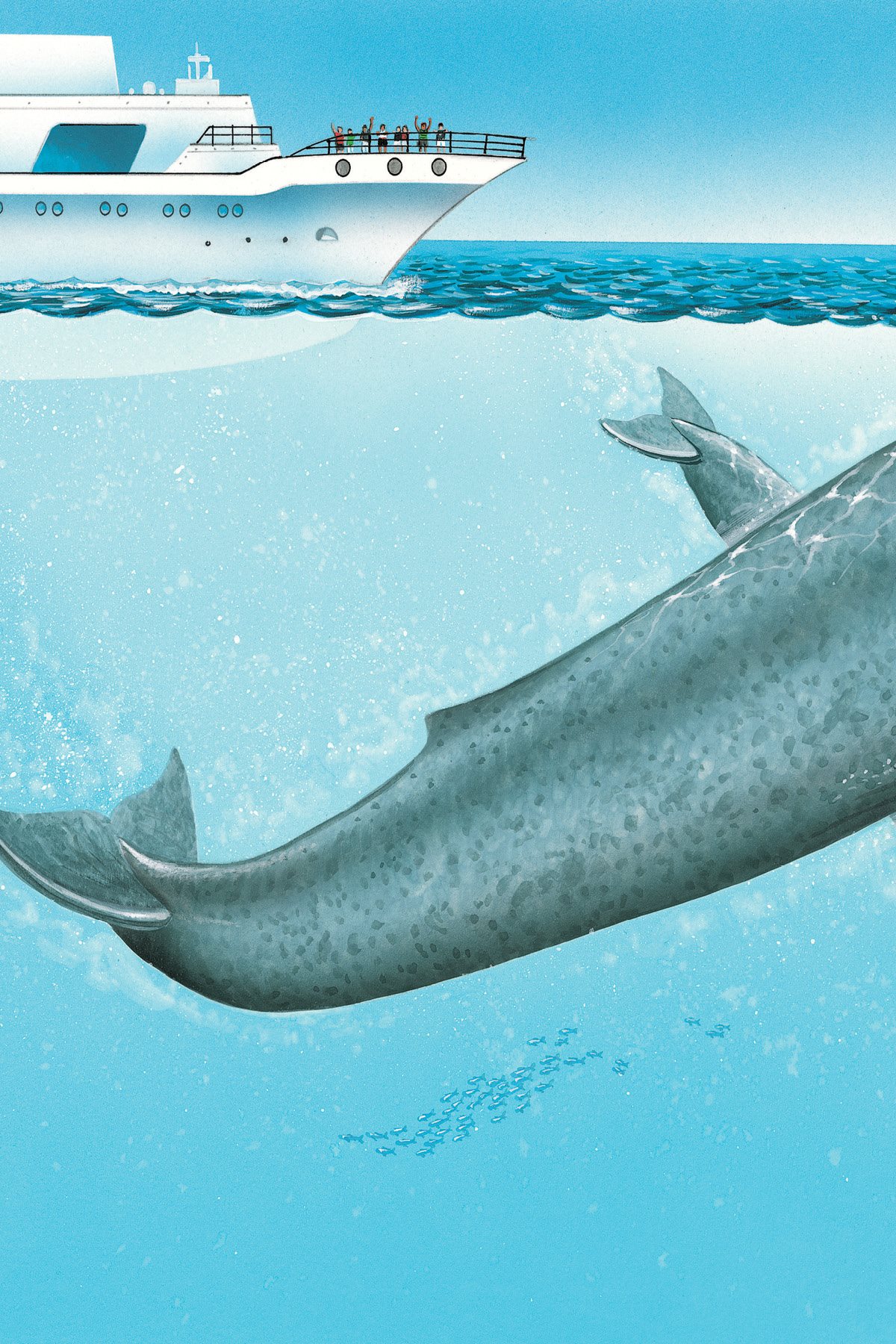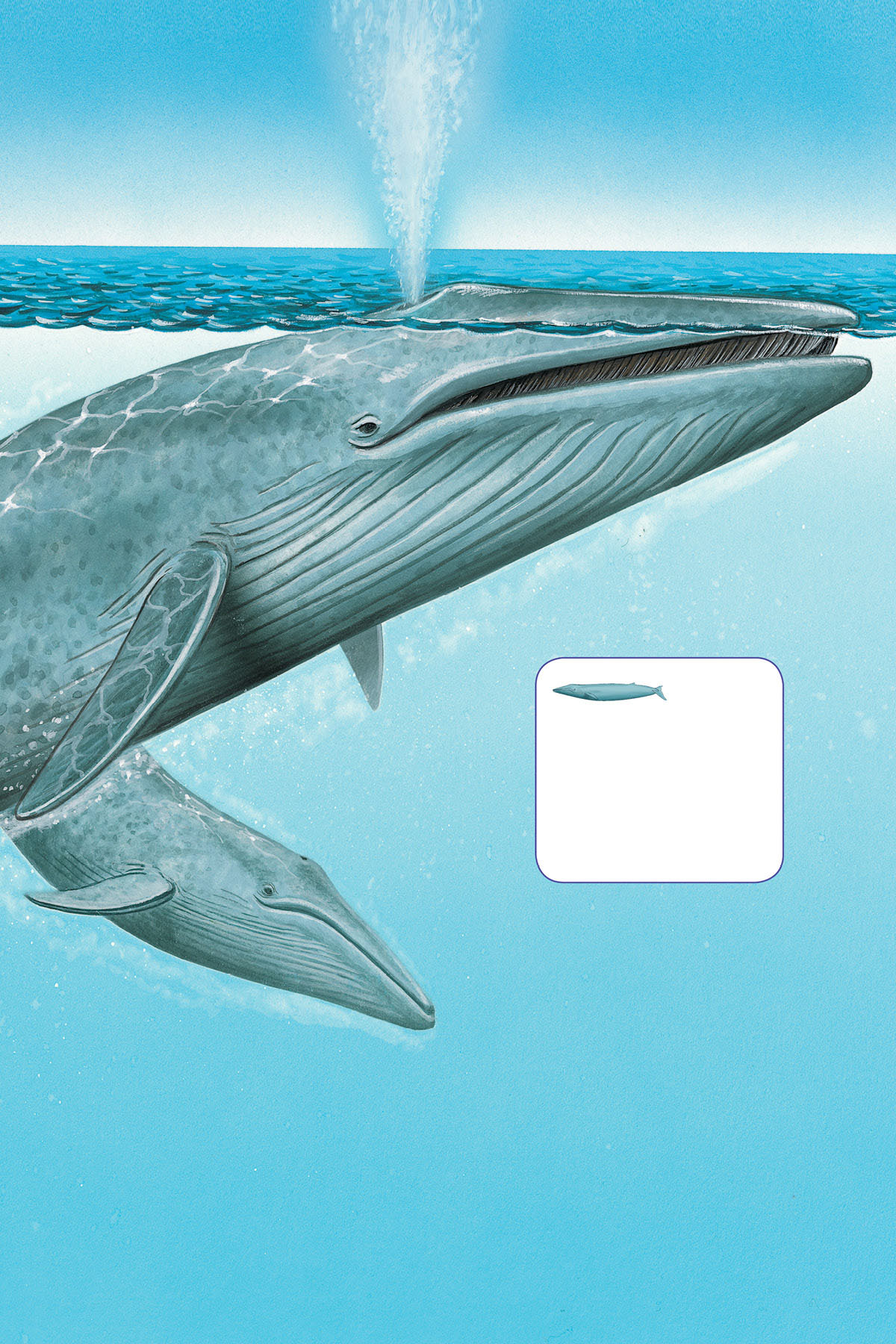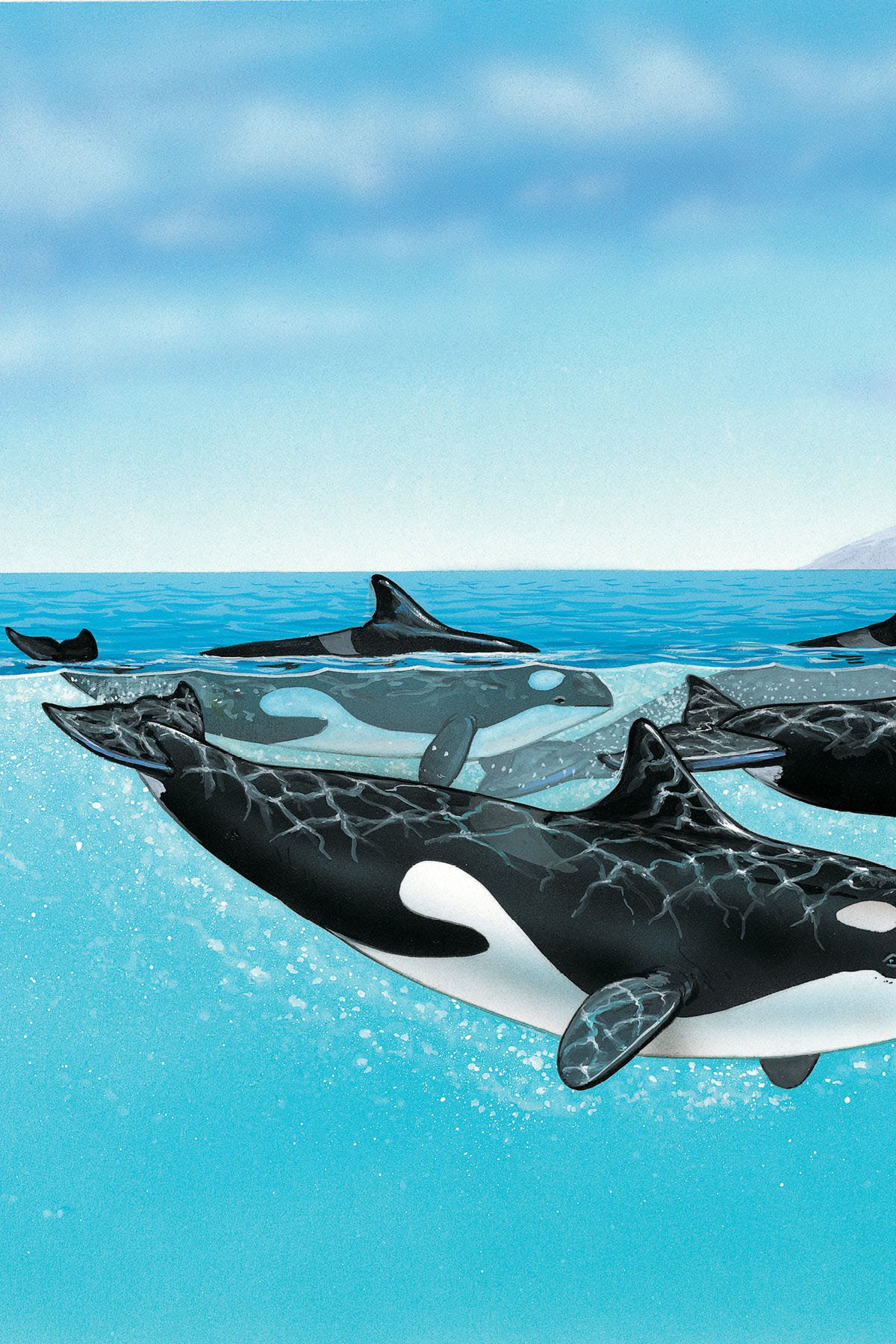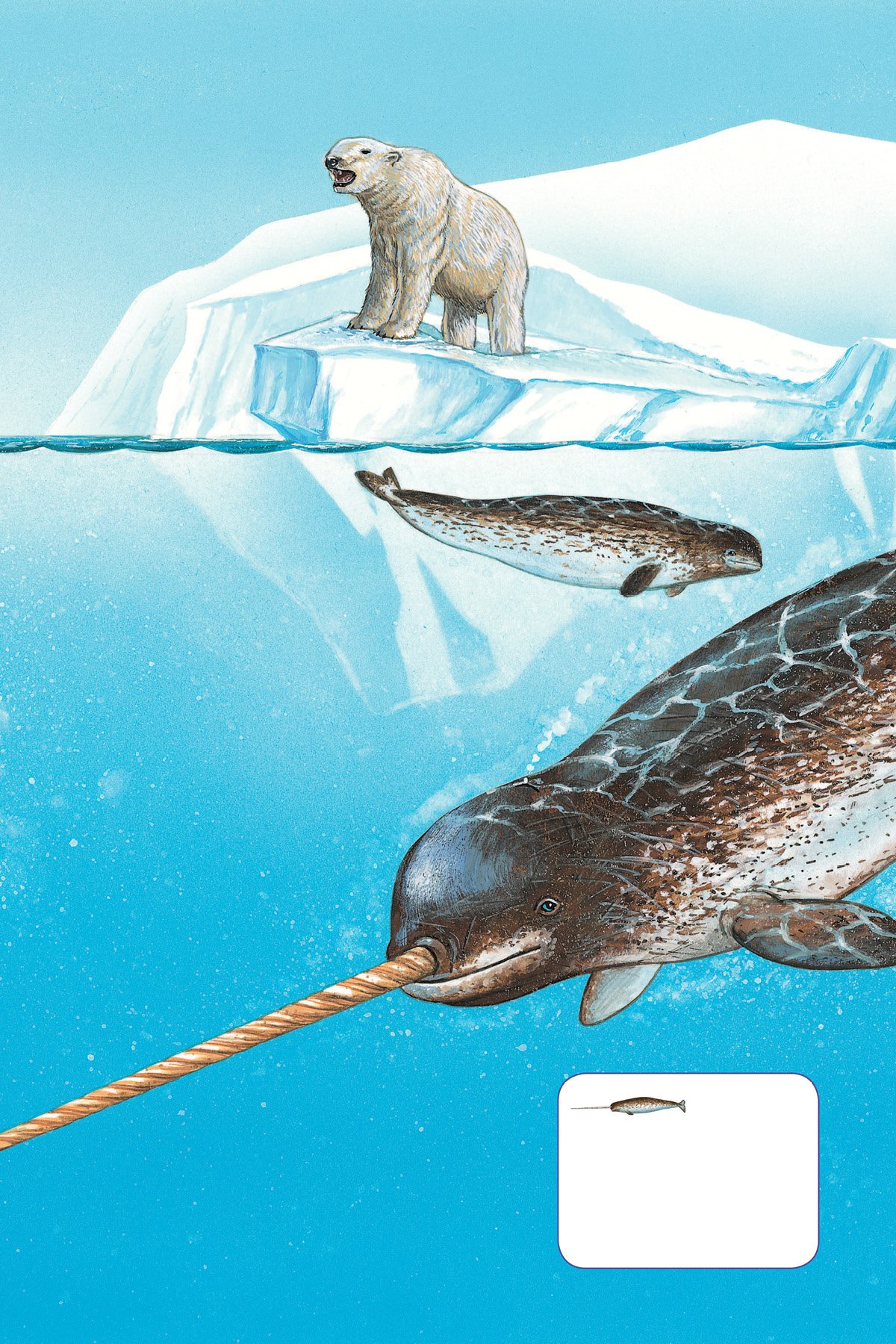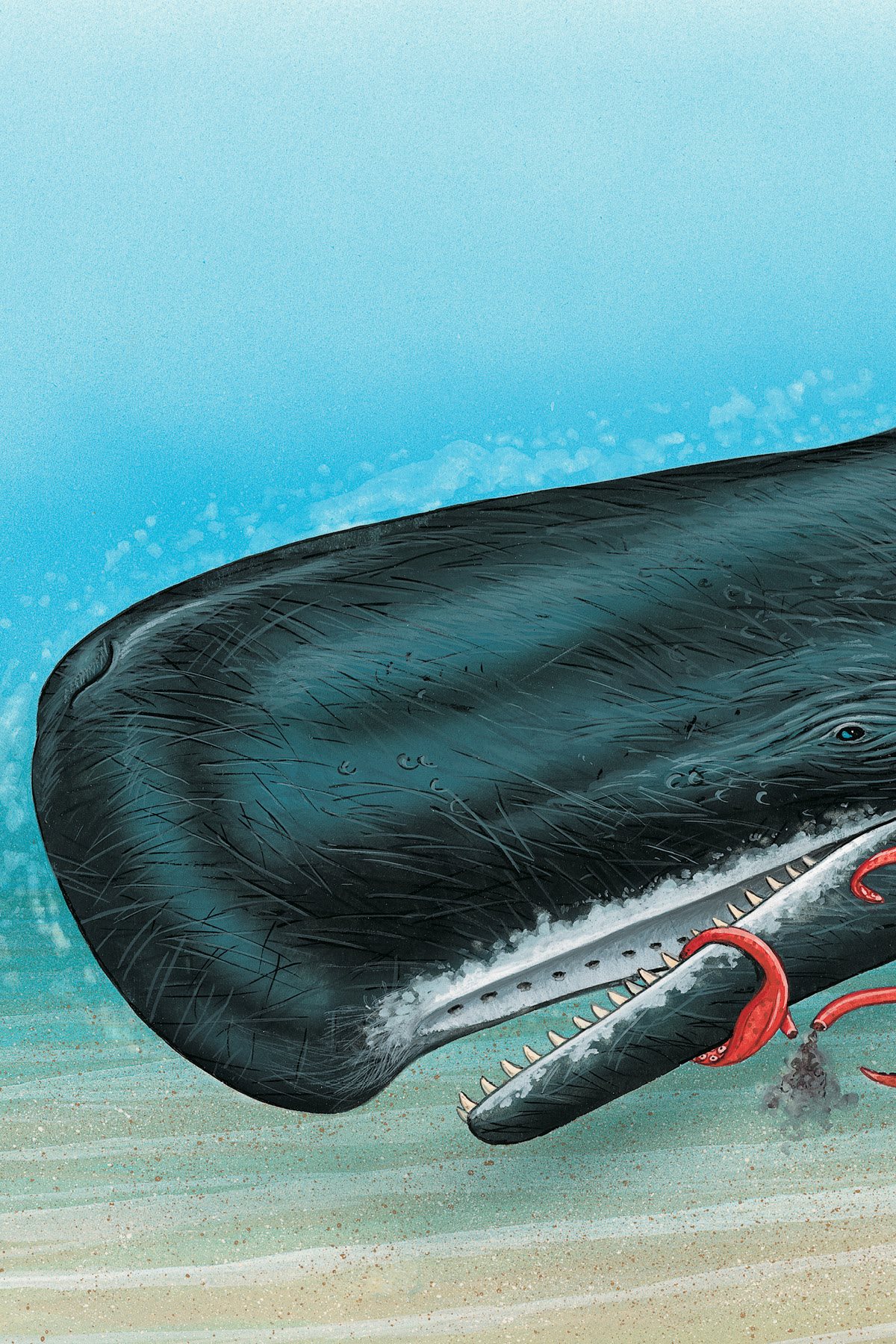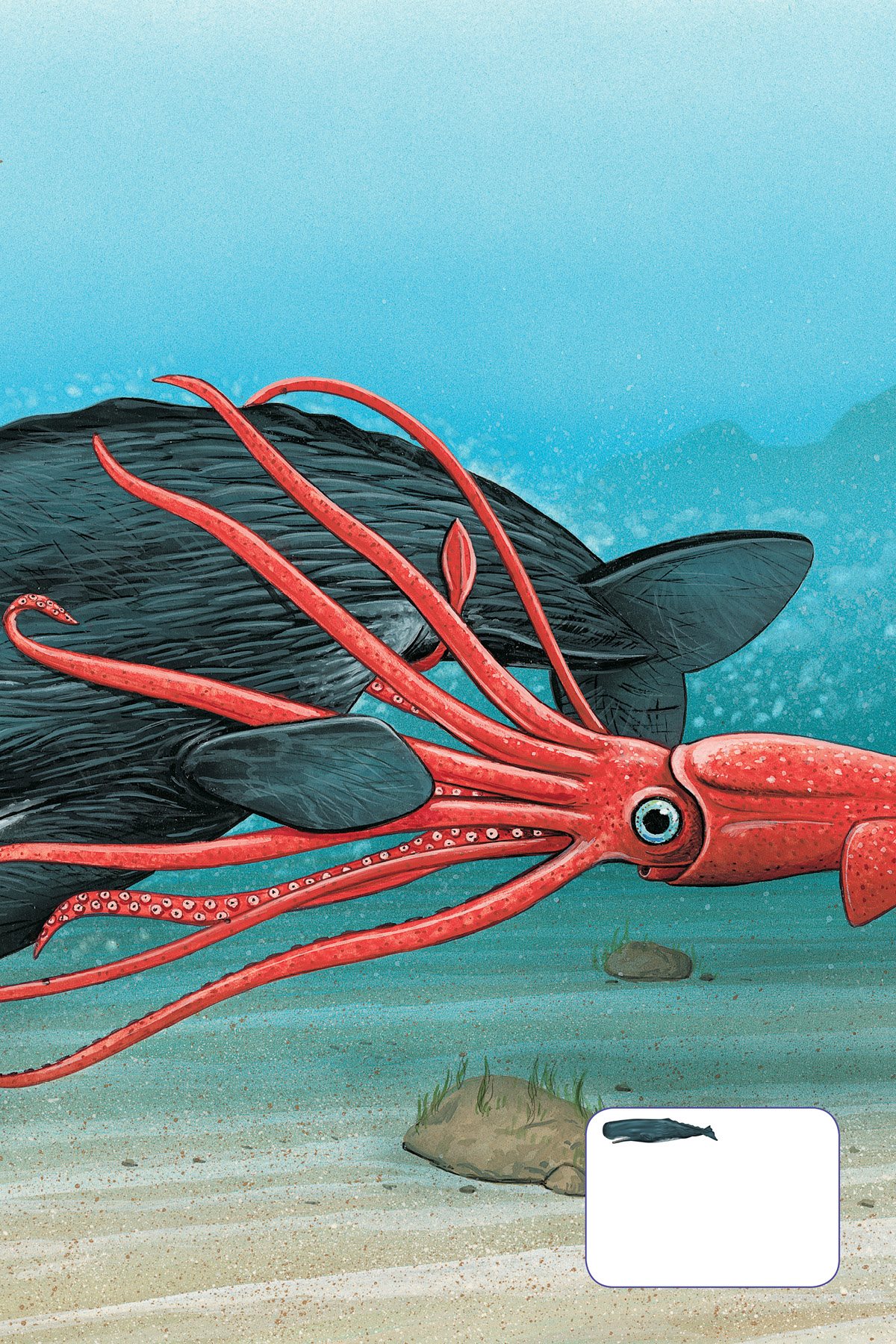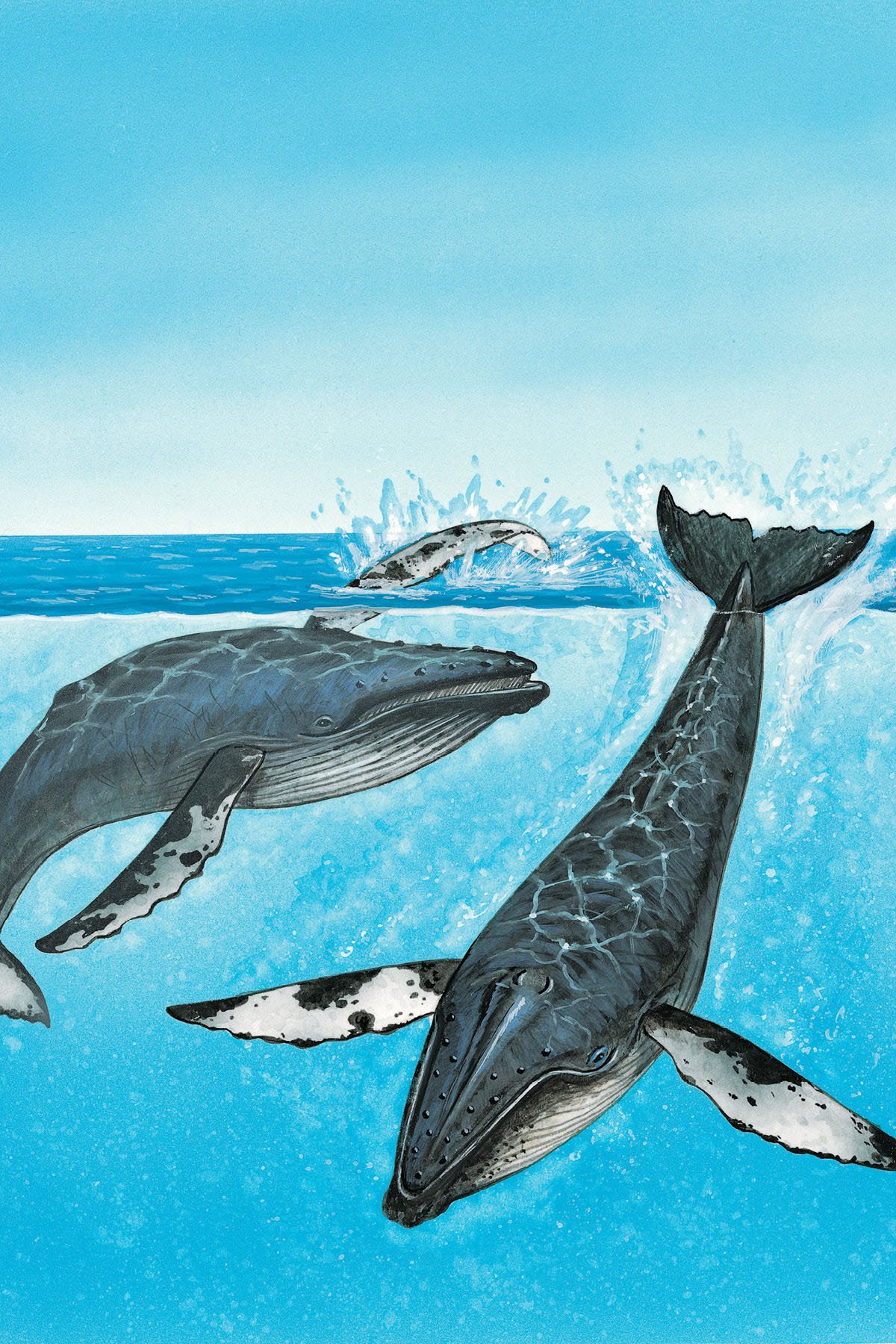Imagine seeing an animal the size of a fire truck jumping out of the water and landing with a tremendous SPLASH! If youre lucky enough to go whale watching, thats just one of the amazing things you might see a whale do!
Splash!
There are different species of whale in the world. The largest of them can weigh more than elephants! Yet some of these awesome creatures will allow humans to touch them.
gray whale
Whales are mammals, not fish. Like all warm - blooded creatures, whales have to breathe air to survive. They swim to the waters surface and breathe through a blowhole . A blowhole is like a nose on top of its head!
blue whale
Magnificent Mammals
Whales also have hair on their bodies and give birth to live young. Baby whales, called calves , drink rich milk from their mothers body. Some calves may gain as much as pounds (91 kg) a day!
gray whale
plankton
baleen plates
There are two kinds of whales: baleen whales and toothed whales. Baleen whales have a set of brushes in their mouths called baleen plates . They use the baleen to strain tiny plants and animals, called plankton , out of the water. Toothed whales have teeth to catch their food.
How They Eat
Another way to tell whales apart is by looking at the tops of their heads! Baleen whales have two blowholes. Toothed whales have only one blowhole.
killer whale
Gray whales travel from the cold Bering Sea in Alaska to California, Baja, and Mexico to have their babies. This 13,000 mile (21,000 km) journey is the longest migration of any mammal. When a baby gray whale is born in these warm waters, it is feet (5 m) long! Thats a big baby!
Gray Whales
Gray whales are the only baleen whales that feed from the bottom of the ocean. They suck in huge amounts of crabs, worms, and other animals that live in the mud.
Facts
Size: feet (14 m) long, tons (31.5 metric tons)
Type: baleen
Diet: crabs & other mud - dwelling creatures
Found in the Northern Hemisphere
These enormous whales are the largest animals on Earth! Blue whales can grow longer than two school buses put together. They can eat up to four tons (3.5 metric tons) of plankton and small shrimp, called krill , a day thats like eating 32,000 hamburgers!
Blue Whales
Like most baleen whales, blue whales feed in cold waters and then travel to warmer parts of the world to breed and have their calves.
Facts
Size: feet (26 m) long, tons (90 metric tons)
Type: baleen
Diet: plankton, krill
Found in the Northern Hemisphere
Killer whales are swift, deadly predators that live and hunt in family groups called pods . They swim at speeds of up to miles per hour (55 kmh) and have curved teeth for biting into their prey. They have even been known to come right out of the water to grab a seal on a beach!
Killer Whales
Facts
Size: feet (9.7 m) long, tons (7.2 metric tons)
Type: toothed
Diet: fish, seals, sea turtles, dolphins, sharks, other whales
Found worldwide
Killer whales are also called orcas . There is no record of an orca ever attacking a person in the wild but they do eat other mammals!
Beluga whales live in cold waters where there is lots of ice, so their snowy white coloring makes them very hard to see. Believe it or not, they are sometimes attacked by polar bears!
Facts
Size: feet (5 m) long, ton (0.9 metric tons)
Type: toothed
Diet: fish
Found in the Arctic
Beluga Whales
Male narwhals have a long spiral tusk that looks like a sword. This tusk is really a tooth that can grow up to feet (3 m) long!
female narwhal
Facts
Size: feet (5 m) long, tons (1.8 metric tons)
Type: toothed
Diet: squid, fish, crab, shrimp
Found in the Arctic
Narwhals
You can tell sperm whales by their huge square heads, dark color, and wrinkled skin. They also have the largest brain in the world. An adult sperm whales brain can weigh up to pounds (9 kg)!
Sperm Whales
Sperm whales sometimes battle and eat giant squid! You can often see round marks left on their heads and bodies by the struggling squids tentacles.
Facts
Size: feet (17.8 m) long, tons (54 metric tons)
Type: toothed
Diet: squid, fish
Found worldwide
Can you tell a whale by its tail? You can if its a humpback! The two halves of a whales tail are called flukes . No two humpbacks have the same fluke markings, just as no two people have the same fingerprints. Humpback whales have flukes that are feet (6 m) wide!

